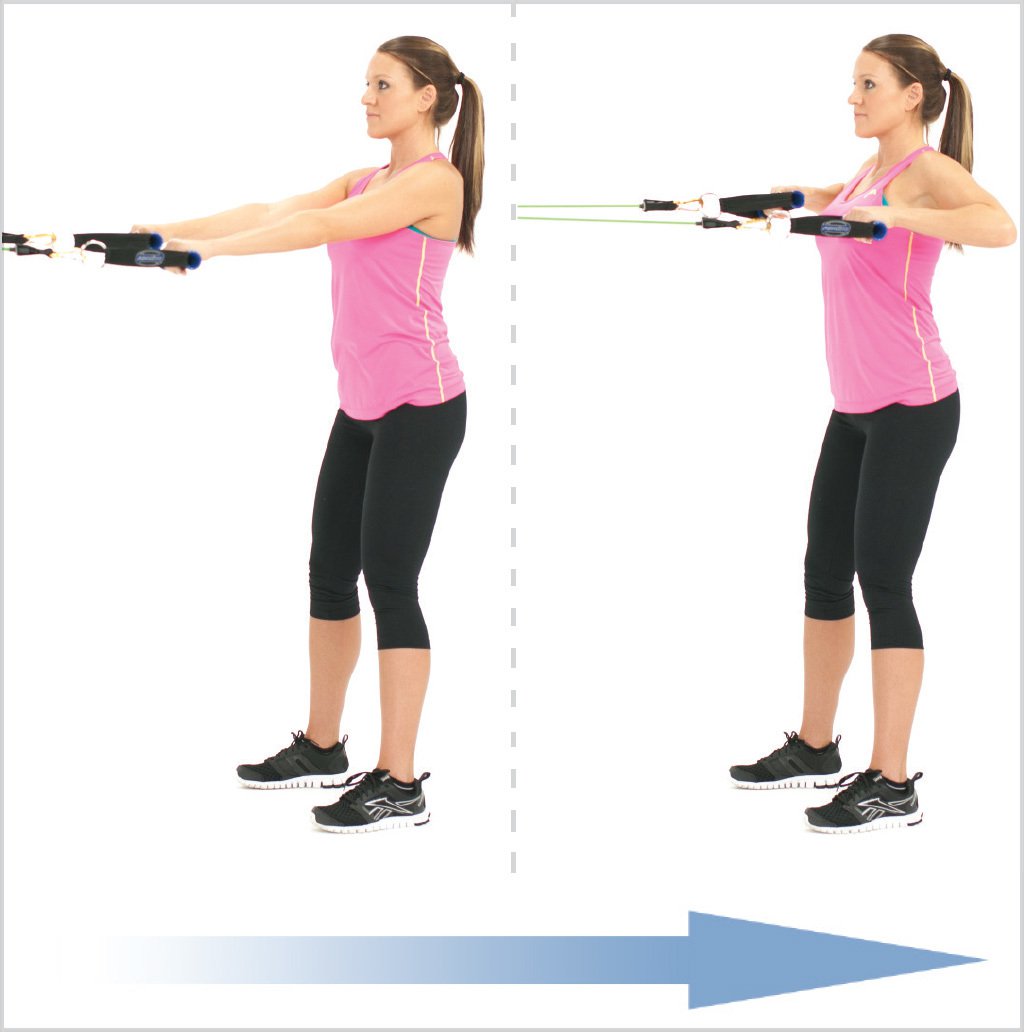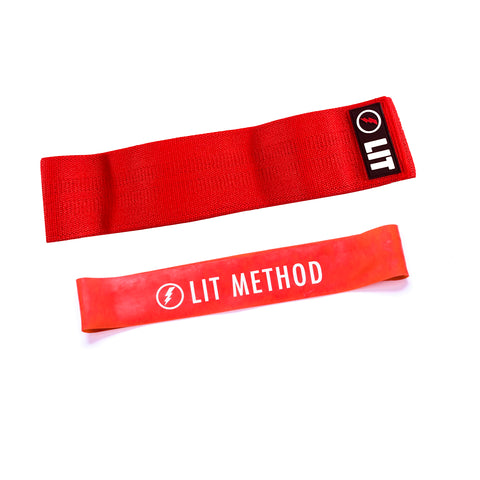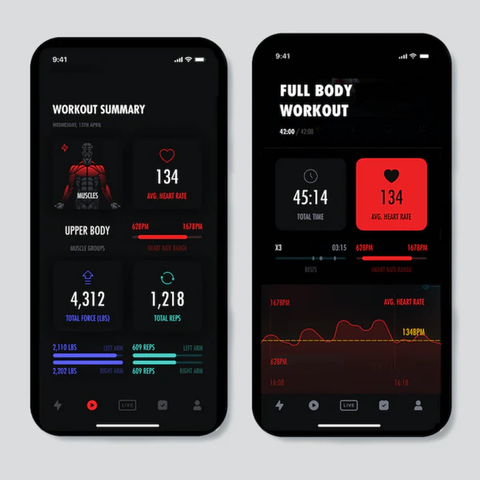Resistance bands are a versatile and effective tool that can take your fitness routine to the next level. Whether you’re a beginner or a seasoned athlete, learning how to use resistance bands can unlock a whole new world of strength training and muscle toning. By incorporating resistance bands into your workouts, you can target specific muscle groups, increase flexibility, prevent injuries, and even rehabilitate existing ones. In this article, we will delve into the benefits and types of resistance bands, guide you in choosing the right band for your fitness goals, and provide tips on using them safely and effectively. Get ready to elevate your fitness journey and achieve impressive results with the power of resistance bands.
Understanding Resistance Bands: An Overview of Their Benefits and Types
Resistance bands are a versatile and effective tool for strength training and rehabilitation. Whether you’re a fitness enthusiast or just starting your fitness journey, resistance bands can provide a convenient way to build strength, increase flexibility, and improve overall fitness. But before you dive into using resistance bands, it’s important to understand their benefits and the different types available.
Unleashing the Benefits of Resistance Bands
Resistance bands offer a wide range of benefits that make them a popular choice among fitness enthusiasts. One of the key advantages is their versatility. Unlike traditional weights or machines, resistance bands allow for a greater freedom of movement and can target multiple muscle groups simultaneously. This makes them an ideal tool for full-body workouts and functional training.
Another advantage of resistance bands is their portability. They are lightweight and compact, making them perfect for home workouts or when you’re on the go. In addition, they are easy to store and require minimal space, unlike bulky fitness equipment.
Resistance bands also provide variable resistance, meaning the level of resistance can be adjusted by simply changing the band or adjusting your grip. This makes them suitable for individuals of all fitness levels, from beginners to advanced athletes. Plus, resistance bands also offer resistance in both directions, providing eccentric and concentric muscle contractions, which can enhance muscle development and joint stability.
Exploring the Types of Resistance Bands
Resistance bands come in different types, each offering unique benefits and features. The most common types include loop bands, therapy bands, and tube bands.
Loop bands, also known as mini bands or booty bands, are small, circular bands that can be wrapped around various parts of the body, such as the thighs or ankles. They are ideal for targeting specific muscle groups, like the glutes or hips. Loop bands provide continuous tension throughout the movement, making them great for building muscle strength and stability.
Therapy bands, also referred to as flat bands or rehab bands, are wide and rectangular in shape. They are commonly used in rehabilitation settings but can also be incorporated into strength training routines. Therapy bands offer variable resistance and are often color-coded to indicate different levels of resistance. They are suitable for a wide range of exercises, including upper and lower body workouts.
Tube bands consist of a long, flexible tube with handles on each end. These bands are highly versatile and can be used for various exercises, such as chest presses, bicep curls, or squats. Tube bands often come with interchangeable resistance levels, allowing you to adjust the tension as needed.
[amazon bestseller=”Resistance Bands” items=”10″]
Choosing the Right Resistance Band for Your Fitness Goals
To maximize the benefits of using resistance bands, it’s crucial to choose the right band for your fitness goals. Here are a few factors to consider when selecting a resistance band:
Identify Your Fitness Goals
Start by determining your specific fitness goals. Are you looking to build muscle strength, improve flexibility, or enhance athletic performance? Different resistance bands offer varying levels of resistance, so understanding your goals will help you select the appropriate band.
Consider Your Fitness Level
Your current fitness level is another important factor to consider. Beginners may find lighter resistance bands more suitable, while advanced exercisers may require bands with higher resistance levels. It’s important to challenge yourself, but also listen to your body and gradually increase the resistance as you become stronger.
Choose the Right Resistance Level
Resistance bands typically come in different colors, indicating various levels of resistance. It’s crucial to choose a band with the appropriate level of resistance that allows you to perform exercises with proper form and without straining your muscles.
Select the Right Band Type
Based on your goals and personal preferences, select the type of resistance band that suits you best. If you prefer targeted exercises, loop bands may be ideal. If you need a versatile option for whole-body workouts, tube bands might be a better choice. Consider your specific needs and choose accordingly.

Proper Form and Technique: Tips for Using Resistance Bands Safely
Using resistance bands safely and effectively is essential to prevent injuries and maximize your workout. Here are some tips to keep in mind:
Maintain Proper Alignment and Posture
Pay attention to your body alignment and posture throughout the exercises. Keep your spine neutral, engage your core, and avoid straining or overextending your joints. Good form is crucial for maximizing the benefits and minimizing the risk of injury.
Start with Lighter Resistance
If you’re new to resistance bands or trying a new exercise, start with a lighter resistance band to familiarize yourself with the movement and ensure proper form. As you become more comfortable and confident, gradually increase the resistance.
Control the Band Tension
Maintain control over the band tension throughout the exercise. Avoid allowing the band to snap back or forcefully extend, as it can cause strain or injury. Make sure to maintain a smooth and controlled movement, focusing on muscle engagement.
Listen to Your Body
Always listen to your body and adjust the resistance or intensity as needed. If you experience pain or discomfort, modify the exercise or consult a professional. Your safety and well-being should always be a priority.

Targeting Specific Muscle Groups: Effective Exercises with Resistance Bands
Resistance bands offer endless possibilities for targeting specific muscle groups. Here are some effective exercises to incorporate into your workouts:
Glute Bridges
Place a loop band just above your knees and lie on your back with your feet hip-width apart. Engage your glutes and lift your hips off the ground, squeezing your buttocks at the top. Repeat for several repetitions, focusing on the mind-muscle connection in your glutes.
Bicep Curls
Stand on the middle of a tube band with your feet shoulder-width apart, holding the handles in each hand. Keep your elbows close to your body and curl your hands toward your shoulders, contracting your bicep muscles. Slowly lower the handles back to the starting position and repeat for several reps.
Squats
Step on a tube band with your feet shoulder-width apart, holding the handles at shoulder height. Lower into a squat position, keeping your chest upright and knees aligned with your toes. Push through your heels to stand back up, engaging your glutes and quadriceps. Repeat for several repetitions, maintaining proper form throughout.

Shoulder Press
Stand on a tube band, holding the handles at shoulder height with your palms facing forward. Press the handles upward, extending your arms overhead while engaging your shoulder muscles. Slowly lower the handles back down and repeat for several reps, focusing on controlled movements.
By incorporating these exercises into your resistance band workouts, you can effectively target specific muscle groups and achieve your fitness goals in a safe and efficient manner. Remember to always perform exercises with proper form and listen to your body’s cues.

Understanding Resistance Bands: An Overview of Their Benefits and Types
What are resistance bands and how do they work?
Resistance bands are flexible, elastic bands that provide resistance when stretched. Think of them as portable workout partners that add extra challenge to your exercises. They work by creating tension in the muscles, helping you build strength and improve muscle tone.
What are the benefits of using resistance bands?
Resistance bands offer a wide range of benefits. They are versatile, affordable, and suitable for all fitness levels. Whether you’re a beginner or an advanced athlete, resistance bands can enhance your workout routine. They help improve strength, flexibility, and endurance, while also increasing mobility and stability. Plus, they are lightweight and portable, making them perfect for workouts at home, the gym, or even when traveling.
What are the different types of resistance bands?
There are three main types of resistance bands: loop bands, tube bands, and therapy bands. Loop bands are circular bands that form a complete loop, while tube bands come with handles at both ends. Therapy bands, also known as flat resistance bands, are wide, flat bands without handles. Each type has its own advantages and can be used for various exercises. Loop bands are great for lower body exercises like squats and lunges, while tube bands are excellent for upper body workouts like bicep curls and shoulder presses. Therapy bands are often used for physical therapy and rehabilitation exercises.

Choosing the Right Resistance Band for Your Fitness Goals
Consider your fitness level and goals
When selecting a resistance band, it’s important to consider your current fitness level and your specific goals. Beginners may benefit from starting with lighter bands that offer less resistance, while advanced fitness enthusiasts may require bands with higher resistance levels. Additionally, think about the type of exercises you intend to do and choose a band that matches the intended use.
Different resistance levels
Resistance bands come in various resistance levels, usually indicated by different colors or markings. These levels typically range from light to heavy. It’s important to choose a band that provides enough resistance to challenge your muscles without compromising your form. As you progress, you can gradually increase the resistance by using a band with higher resistance or by adding additional bands to create more tension.

Consider the length and thickness
The length and thickness of a resistance band can also impact your workout. Longer bands provide more flexibility and allow you to perform a wider range of exercises, while shorter bands are great for targeted movements. The thickness of the band determines the resistance it offers, so you may need different thicknesses for different exercises. Experiment with different lengths and thicknesses to find what works best for you.
Proper Form and Technique: Tips for Using Resistance Bands Safely
Warm up before using resistance bands
Before diving into your resistance band workout, it’s crucial to warm up your muscles and prepare them for the upcoming challenge. Perform dynamic stretches and gentle movements to increase blood flow and get your body ready for the exercises ahead. This can help reduce the risk of injury and improve your overall performance.

Start with lighter resistance
If you’re new to resistance bands, it’s wise to start with lighter resistance. This allows you to focus on mastering the proper form and technique without overwhelming your muscles. As you become more comfortable and confident, gradually increase the resistance to continue challenging your muscles and making progress.
Maintain proper posture and alignment
When using resistance bands, it’s important to maintain proper posture and alignment throughout each exercise. This helps ensure that you’re targeting the right muscles and minimizing the risk of injury. Pay attention to your body’s positioning, keeping your core engaged, shoulders back, and joints properly aligned. Avoid bending or arching your back, as this can strain your muscles and lead to discomfort.

Control the resistance band throughout the movement
To maximize the effectiveness and safety of your resistance band exercises, focus on controlling the band throughout each movement. Avoid jerking or snapping the band, as this can cause unnecessary strain on your muscles and joints. Instead, move slowly and deliberately, maintaining tension in the band throughout the entire range of motion. This controlled movement helps engage the targeted muscles and promotes stability.
Targeting Specific Muscle Groups: Effective Exercises with Resistance Bands
Legs and Glutes
Resistance bands are fantastic for targeting and strengthening your leg and glute muscles. Try exercises like squats, lunges, glute bridges, and lateral walks. These exercises engage your quads, hamstrings, and glutes, helping to build lower body strength and improve stability.
Arms and Shoulders
To target your arms and shoulders, resistance bands are a versatile tool. Bicep curls, tricep extensions, shoulder presses, and lateral raises can all be performed with resistance bands. These exercises help tone your arms, strengthen your shoulders, and build upper body strength.
Chest and Back
If you want to work on your chest and back muscles, resistance bands can be highly effective. Push-ups, chest presses, rows, and seated rows can all be modified to incorporate resistance bands. These exercises engage your chest, back, and arm muscles, contributing to a well-rounded upper body workout.

Core
Don’t overlook the power of resistance bands for your core muscles. Plank jacks, Russian twists, standing anti-rotations, and seated twists are just a few examples of core exercises that can be enhanced with resistance bands. By adding the resistance element, you can intensify your core workout and improve stability and balance.
Remember to always focus on proper form and technique while targeting specific muscle groups with resistance bands. This ensures you’re working the right muscles and reduces the risk of injury. Additionally, don’t be afraid to experiment with different exercises and resistance levels to keep your workouts challenging and engaging.
Conclusion
Resistance bands provide a versatile and effective way to enhance your fitness routine and reach your goals. By understanding the benefits and types of resistance bands, choosing the right band for your specific needs, and using proper form and technique, you can maximize your results and minimize the risk of injury. Whether you’re targeting specific muscle groups, incorporating resistance bands into a full-body workout, or amplifying your stretching and mobility, these bands add a dynamic element to your exercise routine. Additionally, resistance band training can be utilized for rehabilitation and injury prevention, making them beneficial for athletes of all levels. Take your workouts to the next level and learn how to use resistance bands to achieve the strength and flexibility you desire.
Frequently Asked Questions
1. What are resistance bands and how do they work?
Resistance bands are elastic bands made of rubber or latex that offer resistance when stretched. They work by challenging your muscles’ strength and flexibility as you stretch and pull against them. The resistance they provide helps in building and toning muscles.
2. How do I choose the right resistance band for my fitness level?
Choosing the right resistance band depends on your current strength and fitness level. Generally, resistance bands are color-coded to indicate their level of resistance. Lighter-colored bands provide less resistance, while darker-colored bands offer higher resistance. Start with a lighter band and gradually increase resistance as you gain strength.
3. What exercises can I do with resistance bands?
Resistance bands offer a wide range of exercises that target different muscle groups. You can use them for various exercises such as squats, bicep curls, shoulder presses, glute bridges, lateral leg raises, and more. The versatility of resistance bands allows you to work your entire body and adapt exercises to your specific needs.
4. Are there any safety precautions to keep in mind while using resistance bands?
Yes, it’s essential to follow proper safety guidelines while using resistance bands. Make sure your bands are in good condition without any tears or damage. Always perform exercises in a controlled manner and maintain proper form to avoid injury. Avoid sudden snapping or release of the bands, as it may cause them to hit your body. Additionally, consult with a professional or a fitness trainer to learn proper techniques and avoid any potential risks.
5. Can resistance bands help with rehabilitation or physical therapy?
Absolutely! Resistance bands are often used in rehabilitation and physical therapy to aid in muscle recovery and increase strength. They provide a low-impact way to perform exercises and can be adapted to different levels of mobility. However, it is crucial to consult with a healthcare professional or a qualified therapist before incorporating resistance bands into your rehabilitation routine to ensure suitability and avoid any potential complications.














